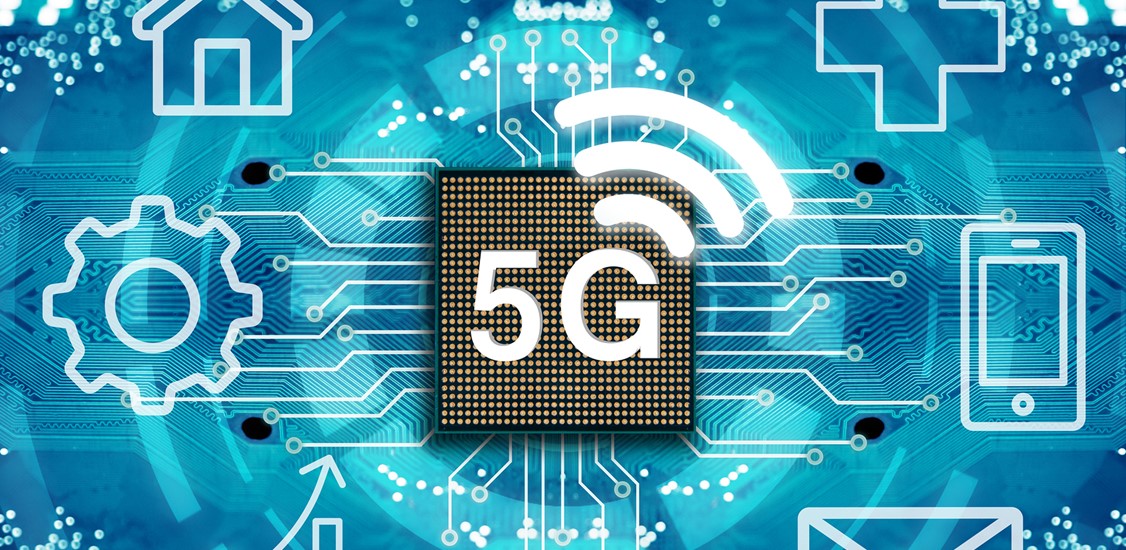The impact of 5G is just getting started. All three major 5G operators - Verizon, T-Mobile and AT&T - are heavily investing in their 5G infrastructure. T-Mobile launched the world’s first standalone 5G network in August of last year, and the U.S. government is fast-tracking the auction of 5G C-band spectrum by 2023, just to accommodate accelerating demand.
It’s believed that the coronavirus outbreak has caused carriers to quicken their 5G rollout as the pandemic increased the use of videoconferencing, telehealth, remote schooling and other Wi-Fi straining activities. But other factors are in play as well - particularly the IoT (Internet of Things). According to ResearchandMarkets, the 5G IoT market is projected to grow from $2.6 billion in 2021 to $40.2 billion in 2026, for a Compound Annual Growth Rate (CAGR) of 73.0%.
Why 5G makes a difference
5G cellular networks will play a crucial role in the expansion of IoT ecosystems for one simple reason: data, and lots of it. The future of digital devices is all about data - and with the 100X increase in data throughput promised by 5G, many of these new devices will suddenly find their footing.
5G also promises a network capacity of 10 terabits per second per square kilometer. This will catalyze data transformation on an unprecedented scale. With 5G, for example, data can be transferred to and from vehicles traveling at speeds up to 310 mph, which is fast enough for passengers on bullet trains to connect to the internet and even continue to take phone calls while in transit.
Ultra-reliable low-latency communication will also come into focus. 5G has a theoretical latency of less than one millisecond, compared with 20 to 40 milliseconds in current generation WiFi. For the first time, autonomous vehicles will become a practical possibility thanks to the onboard, 5G-enabled sensors that operate with a split-second response.
Introducing mMTC
Perhaps the biggest gamechanger to come from 5G networks will be Massive Machine Type Communication (mMTC). mMTC can connect gigantic numbers of devices, on the order of 300,000 to 1 million devices per cell, all of which transmit very small amounts of information.
These transfers are mostly M2M (machine-to-machine) conversations taking place in such fields as healthcare, transportation and agriculture. But they will also play a part in smart cities applications; e.g., smart meters for utilities, parking lot management, even waste control. Because 5G supports ultra-fast communications at a tenfold improvement rate over those enabled by 4G, IoT technology in the form of mMTC will thrive.
Where IoT is hitting its stride
In addition to healthcare, education and smart cities initiatives, 5G-enabled IoT will quickly reach its promise with smart home solutions such as home monitoring, home entertainment and green energy. Look for industrial applications, however, to realize the earliest benefits.
Industrial IoT is so consequential and far-reaching that the discipline has its own moniker: IIoT (Industrial IoT). IIoT sensors can monitor equipment health, make real-time safety decisions and reduce manufacturing costs. In process manufacturing, for example, 5G-enabled sensors can monitor chemical and fluid mixtures with exquisite accuracy, saving facilities millions of dollars every year.
Fully autonomous vehicles, while still some years away, are appearing on the horizon now via intermediate technologies. Information-rich HUDs (heads-up displays) are increasingly common on luxury automobiles, giving drivers turn-by-turn route direction on their windshields; soon, virtual reality and augmented reality (VR/AR) projections will also deliver HUD warnings about oncoming hazards and, where appropriate, information about nearby businesses and amenities. More importantly, crash-avoidance sensors, capable of processing 1.3 million data points per second, are possible thanks to 5G transfer speeds.
Real-world examples
In one city, 5G-enabled IoT is already able to track passenger count on the local trolley system and adjust the number of trolleys on a line in real-time. It also handles engine management, brake pad wear and tear, and even drive digital signage and WiFi within the trolley cars for a better overall guest experience.
In another example, a healthcare facility that had sadly suffered an active shooter crisis was able to subsequently equip its staff with smart emergency call buttons. The 5G-powered devices are able to analyze calls so an employee can differentiate between summoning law enforcement versus discretely notifying facility staff if the worker feels uncomfortable in the presence of a patient. Home healthcare workers can access the system as well via clicks, text or voice.
Consider security
Enterprises that want to jump on 5G-IoT must ensure that security is a primary consideration. 5G allows organizations to have more devices connected at any given time within a smaller footprint, and with much faster bandwidth. This increases the possibility - and consequences - of DDoS (distributed denial-of-service) attacks. Telecoms in particular need to make sure they are doing everything possible to minimize DDoS attacks, as higher speeds allow hackers to do more damage faster.
Despite the headwinds, however, users shouldn’t be afraid of the technology. 5G will have considerable benefits at home, at work, and even in circumstances where the two intersect. Highly secure 5G VPNs (virtual private networks), for example, will help foster the work-from-home movement.
Just the beginning
Five years from now, 5G will have transformed our daily lives in ways we’re just beginning to comprehend. From heart monitor implants to smart traffic systems, to new and better ways to stop home intruders, IoT devices powered by 5G will enable unmatched innovations and applications.
4G gave us Uber, mobile banking and video streaming; imagine where 5G-enabled IoT will take us. 5G will increase network resiliency, exponentially increase data transmission and, via satellite networks, untether us from terrestrial towers and antennas. Combined with IoT sensors, it will open up services and experiences we haven’t yet dreamed of. 5G, like its predecessor networks, may be just another tech sandbox - but it’s one that will unleash human ingenuity like never before.




















